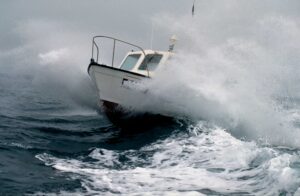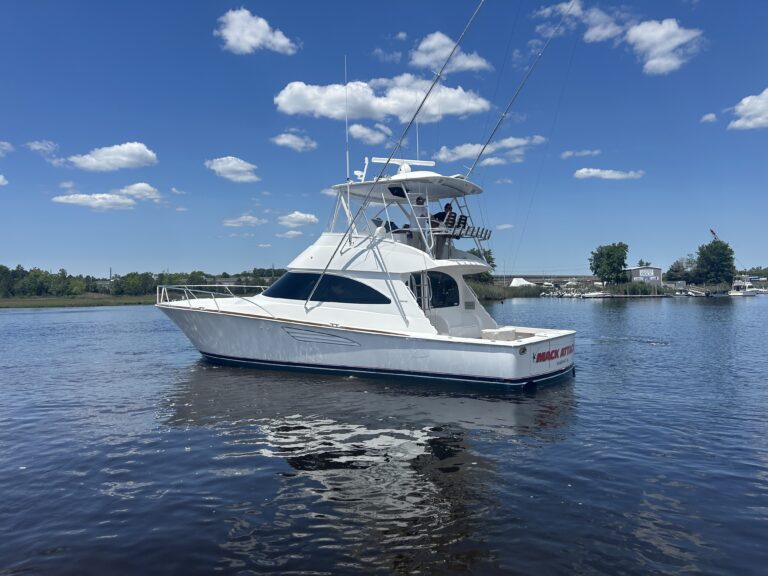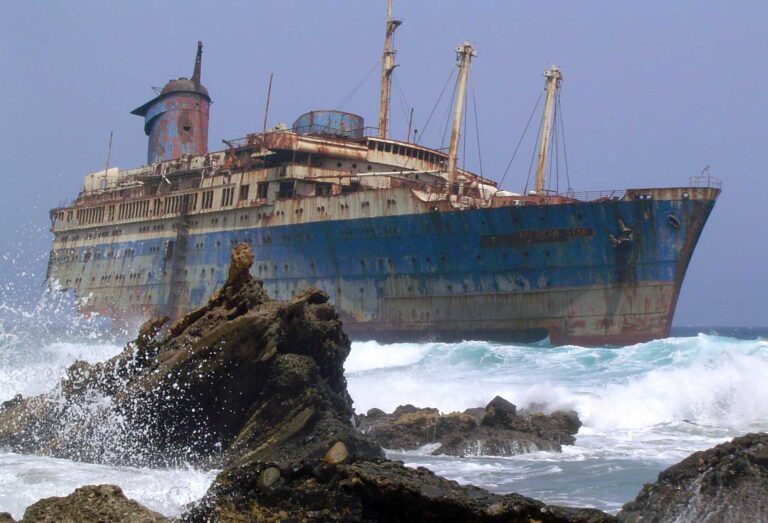Tracy Lynn Tedesco learned what a terrible mistake she had made after it’s too late. She is the breadwinner of the family. She pays the bills. She registers her husband’s boat in her name instead of his.
What could possibly go wrong?
For a while, the family of four lives aboard this leaky wooden cabin cruiser at Reynolds Park Yacht Center in Green Cove Springs, Florida. It’s where I keep our big boat, so I know them.
In March 2010 the boat leaves the marina and soon sinks while at anchor on the St. Johns River. Tedesco is charged with abandoning a vessel, a first-degree misdemeanor that carries a sentence of up to a year in jail. Even though everyone involved — and I mean everyone — knows it’s more his boat than hers, she pleads no contest to the charge and is sentenced to probation.
The terms of her probation are impossible. Tedesco is suffering from breast cancer. Her family does not have $630 to spare for fines and fees, let alone the $2,000 or more it would cost to salvage her husband’s boat, a condition of her probation. She also misses a couple days of court-ordered work for the Salvation Army.

Now a probation violator, she is sentenced to 30 days in the Clay County Jail, beginning on Dec. 18. Sheriff Jeff Cooke of Allen County, Kentucky, writes a letter to the court, received Dec. 28, which results in Tedesco’s early release on Jan. 6, 2011.
You can get a copy of Cooke’s letter at the Clay County Clerk’s Office, but the entire text will be blacked out. The connection may be that the Tedescos hail from Kentucky. Maybe Sheriff Cooke had threatened to mount a rescue operation!
It takes five more years for cancer to finally take Mrs. Tedesco, at age 52, and every Christmas until her death must have been burdened by memories of a cold jail cell and being away from her little boy, Frankie, and his older sister. That’s not right.
Fast forward
On Oct 7, Hurricane Matthew sweeps up the Atlantic Coast of North Florida. Green Cove Springs is flogged by 60 mph-plus winds. Several boats break loose, and two sink. One is ours. The other belongs to Green Cove Springs Mayor Pam Lewis and her husband.
The Lewises’ sailboat drags anchor and sinks against the city pier. Our little sailboat, with no engine and no fuel tank, also drags and sinks a little ways beyond the pier and farther out into the river.

Unlike Tedesco, we are not indigent. Granted, Florida has a derelict vessel problem, but from day one we intend to recover our boat. To be clear, our boat is never “abandoned.” We mark her with big white fender balls to warn other vessels of the potential hazard.
Our problem is that every salvor within a hundred miles is concentrating on the insurance-funded recovery of the dozens of boats sunk along the Intracoastal Waterway from St. Augustine to Daytona.
We get the first threatening letter from the county on Oct. 17, ordering us to remove the vessel within five days, which of course is impossible. Here’s my thinking at the time:
If the county could jail a hard-working mom … with a young son … at Christmastime … while she’s battling cancer… for a non-violent “crime” … committed by someone other than her — what is the outlook for a couple of Yankee carpetbaggers?
Deputy Chris Castelli, a well-regarded river cop, assures us that we have a little more time, however. We get a $1,400 quote from Monkey Fist Marine, a local salvor with a store selling used-boat parts. But Monkey Fist is busy with the rest of them, recovering boats from the waters of St. Augustine.
Then Monkey Fist suffers a terrible setback when its workboat catches fire at Green Cove Springs Marina, and the owner and three others suffer burns. The boat is destroyed. The story makes the news.
Meanwhile, some friends are helping us try to recover the boat, thinking we might get it done before any of the salvage people can get around to the job. After several attempts, we all give up. We lack the right equipment, and the workboat lacks sufficient horsepower.
Tough talk
December rolls around, and Deputy Castelli’s attitude changes; he is now ready to charge us with the same crime as Tedesco. I reiterate that we are waiting for Monkey Fist, which has agreed to do the job. When, he asks?
From a hospital bed in Gainesville, where he is recovering from second-degree burns, the owner of Monkey Fist promises to have our boat out of the water by the end of December. Not good enough, Castelli says. Our boat is a hazard to navigation.
As a marine industry professional, I am completely taken aback. What time frame is “good enough,” I ask? Five days, he says, which is of course impossible. He relents and gives us 10 days. Monkey Fist can’t help us. The boss is in the hospital, and their salvage boat is a total loss.
I tell my tale of woe to Tim Turbeville at Salter Marine in Green Cove, and he agrees to do the job and then does the job. Turbeville and his crew get the boat out of the water and we give her to Monkey Fist to break up for parts. Thanks again, Tim. Beers on us.
It turns out that our boat (named Tattler, by the way) had ended up amid a group of pilings, the tops of which lie just below the waterline at low tide. There’s a bunch of them, probably the relics of an old steamship pier or shrimping platform.
In my follow-up with Castelli, I make the point that the balls that marked our boat had also served to warn boaters away from these dangerous, possibly century-old underwater hazards. Though sunk, Tattler actually makes the river a little safer for a time.
I’ve been navigating the St. Johns River for 15 years, and I begin to tell Castelli the approximate locations of other old pilings, including at least one I ran into a couple hundred feet from the ramp where the Sheriff’s Department launches its own boats.
Accidents waiting to happen
Castelli knows full well that a boat hitting one of these underwater hazards, even at moderate speed, would be equivalent to a car wreck, but without the benefit of seat belts and air bags. But he argues that these pilings are indicated on government charts, and so that’s OK. (He also begins to lecture me on the nature of charts and charting, which rankles a bit because I’ve got tens of thousands of ocean miles under my belt, so you might say I’d already gotten that memo.)
First of all, the indications of pilings on the chart are woefully imprecise. Second, I have yet to see some kid on a jet ski with NOAA Chart 11492, which is big enough to cover a table at Ruby Tuesday, spread out over the handlebars.
But I know Castelli means well, and I have a sense that his get-tough baloney had been imposed from above. I ask him: “Deputy, why don’t you suggest a new initiative for the county to either mark all those pilings as hazards or have them removed?”
As it happens, Castelli did make a suggestion about piling markers at some point in the past. He was shot down, he says, because if the county were to install hazard markers at piling locations, but failed to mark them all, and then some boater ran into one of the unmarked pilings, the county would be vulnerable to a lawsuit — much more vulnerable than if none were marked in the first place.
Pull ’em out
That’s when I decide to write this blog. Clay County (the state of Florida, too) takes a hard line with the Tedescos of the world in the name of tidiness and safety on the water, but as an institution it cares more about protecting itself from lawyers than it does about protecting the boating public from potentially deadly hazards. That’s not right.
Clay County Commissioners plan to address the issue of whether to repair the Shands Pier, another Matthew casualty on the St. Johns River. They should also consider spending a few bucks to remove those gosh-darned pilings before somebody gets killed. Eliminating these hazards would constitute at least a partial redemption for the miscarriage of justice that we allowed to happen to the late Mrs. Tedesco.
Besides his role at the AIM Marine Group, Peter Swanson is a Coast Guard-licensed captain, having trained boaters and delivered vessels on behalf of owners on both the East and West coasts. He served two years on the Harbor Commission for the town of Salisbury, Massachusetts, with jurisdiction over its half of the Merrimack River.










